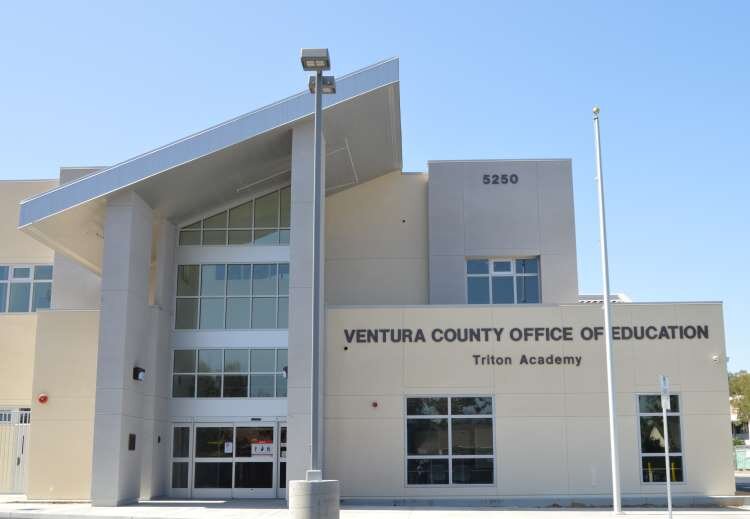CSU Channel Islands Hosts a New Online Chumash Language Dictionary
/Kaia Tollefson, Jenn Perry, Asha Ramachandra, Matthew Vestuto, Richard Yao, Salvador Tumamait-Ambriz
A Chumash dialect spoken by the Barbareño/Ventureño Band of Mission Indians thousands of years ago is alive and thriving with a new online Chumash language dictionary hosted by CSU Channel Islands (CSUCI).
Ventureño Chumash, also called mitsqanaqan, is one of six (some say seven) documented Chumashan languages, each named after a mission. There have been other Chumashan dictionaries, but this is the first online dictionary specific to the Barbareño/Ventureño Chumash. These are the indigenous people who lived in Ventura County and the northern Channel Islands for thousands of years.
Matthew Vestuto, Chairman of the Barbareño/Ventureño Band of Mission Indians (BVBMI) Tribal Council who is a self-trained linguist, has been working for years to get an online presence for the mitsqanaqan dictionary, which was developed by Cal State Fullerton (CSUF) Linguistics Lecturer Timothy Henry-Rodriguez and released in 2019.
Henry-Rodriguez began developing the dictionary when he was in graduate school in 2005 and was later aided by a National Science Foundation Documenting Endangered Languages award for $25,000. He studied the notes of linguist and ethnologist John Peabody Harrington (1884-1961), who specialized in California indigenous people.
After graduate school, Henry-Rodriguez met Vestuto, who helped do more research with the aid of other members of the BVBMI.
“Our last native speakers died in the 1960s and so we’re reliant upon the archival record,” Vestuto said.
When the dictionary was released in 2019, Henry-Rodriguez described it as a labor of love for him, his student researchers, and the researchers from the Barbareño/Ventureño tribe.
“First and foremost are the various Chumash speakers who, despite oppressive social conditions and economic constraints, still understood the importance of recording their language and the urgency to do so,” Henry-Rodriguez wrote. “While they may not have known that all their hard work would come to fruition in the form of a dictionary, it is my hope that this work will honor all the hard work they did. Their bravery and strength truly inspire me continually.”
Although Henry-Rodriguez did the initial research and created the dictionary, he credits the BVBMI with working to get it online, which took place recently thanks to the expertise of CSUCI’s Information Technology Services team and the John Spoor Broome Library staff.
Vestuto and fellow researcher Salvador Tumamait-Ambriz were guests at a recent campus event in which the first phase of the dictionary was rolled out, with phases two, three and four to follow in the future.
CSUCI President Richard Yao took the podium to talk about the campus tradition of honoring the place where the University now sits, and the people who dwelled here. Yao also spoke about the President’s Chumash Advisory Council (PCAC), which was formed in 2023 between CSUCI and the BVBMI.
“In creating this Council, we acknowledge that the Chumash are the first people of the lands on which the University operates, and that CSUCI’s campus is on the unceded territory of the BVBMI,” Yao announced when the council was formed. “CSUCI has the responsibility and desire to maintain strong relationships with the BVBMI, and together we share a commitment to working in collaboration to be stewards of the land and of its natural and cultural heritage.”
The language began to disappear when the Spanish missionaries arrived in 1769 to build 21 missions up the California coast, forcing Chumash to work for them and introducing European diseases to which the Chumash had no natural immunity. The Chumash way of life - and their language - changed.
“The age-old American story is that when indigenous people went to boarding schools, they were taught their language was savage and not worthy and to not speak it,” Vestuto said. “That affects people. For a university to say, we hold your language in high esteem - to say it’s something we want to support - also affects us in a good way.”
CSUCI Professor of Anthropology and Executive Director of Regional Educational Partnerships Jennifer Perry, explained why this project is named the “House of Language.”
“By calling it the House of Language, we are referring to a living repository,” Perry said. “It’s not intended to preserve a static language, but to keep it alive and in practice and constantly evolving.”
Plans are underway to incorporate the Chumash language into the signage around campus, offering the name of a tree or plant, for example, in both English and Chumash. There are also plans to incorporate the Chumash language into the University curriculum.
“To us, the language is not imposed upon the land it comes from the land,” Vestuto said. “Language all around the world is like a living entity that pulses through the ages carrying crucial knowledge through the centuries, but it requires new breath. Our language was disrupted. We’ve developed a partnership with this campus and in doing so, we’ve also developed a friendship. The hosting of an online dictionary in our language is a major step toward assisting us in our healing.”
To access the mitsqanaqan (Barbareño/Ventureño Band of Mission Indians) dictionary, visit ciapps.csuci.edu/ChumashDictionary.





